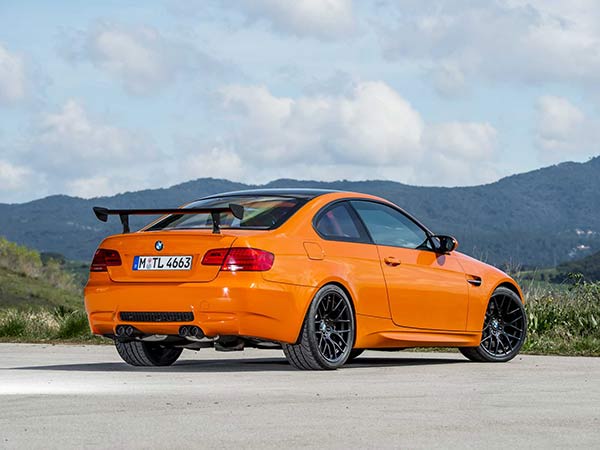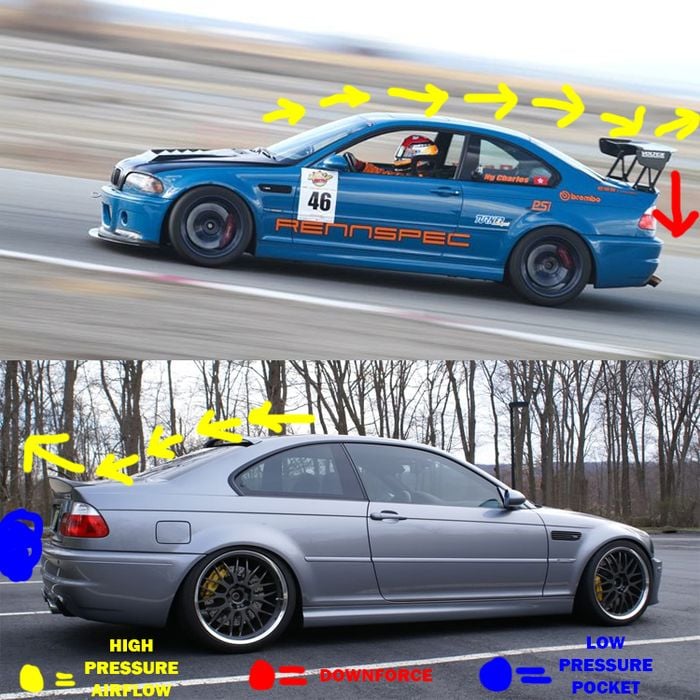Among car enthusiasts, the terms wing and spoiler are often used interchangeably. This is a mistake. Not only are the definitions of wings and spoilers different, but their purpose is also different. Below we will introduce the basic terms and functions of each and how to identify them.
As we all know, BMW models from old to new have added spoilers and wings to their models.

The shape of a car wing (wing) is similar to an inverted airplane wing-it deflects the airflow upward to create downforce at the rear of the vehicle.
The spoiler is an obstacle to the local airflow and can improve the overall airflow around the vehicle. Basically, you are adding a barrier to an area of unwelcome air behavior so that the air will flow elsewhere. Spoilers are used to disrupt (disturb) airflow.
Air from the roof naturally flows through the trunk lid (such as the old Ford Escort), the rear window or the rear of the roof (such as Deltona). If the air does not find any obstacles, it can flow faster and the pressure there will be very low, thereby generating lift (through the pressure difference with the chassis). If we add an obstacle (spoiler), the situation will change, because the airspeed is reduced, causing the pressure to increase, and therefore the lift at the rear of the car is reduced.
A well-designed spoiler can reduce lift to zero or even negative (downforce). However, adding a spoiler also has disadvantages because it may increase drag. It all depends on the skill of the engineer who designed it.
The car spoiler is easy to spot at first glance: it is usually an airplane set at an angle at the trunk lid/rear window/roof, connected to the car, and there is no space in between, which forces all air to flow through the top of the trunk lid. Spoiler. They were very common in the 70s and 80s, when many iconic rally cars contained them, and they were of various sizes: Porsche 911 Carrera RS, Ford Escort, Fiat 131 Abarth, Lancia Stratos or Lancia 037 Rally, to name just a few cases.
In short, adding a well-designed spoiler to a car means reducing rear lift, with minimal or zero drag increase.
The wings allow air to flow above and below the surface. The rear spoiler allows air to flow only through the top surface. This is the easiest way to remember this is to consider the wings of an airplane, with air flowing on the top and bottom surfaces.
The main purpose of BMW's rear wing is to provide downforce. The wing on an airplane provides lift. If you turn the wing upside down and install it on a car, it will provide lift in the opposite direction, which creates downforce. The wings are installed at the rear of the vehicle to push the rear wheels down in the best way to provide the greatest possible traction.

So, if it is so easy to distinguish them, why do we always misunderstand them? To simplify the task, we propose some simple rules to end this common mistake:
The spoiler is a barrier that forces the air to flow over it, there is no space separated from the car, and
The car rear wing is an inverted airfoil element, separated from the surface of the car, allowing air to flow above and below the wing.
In addition, the tail wing may include a lower plate, that is, an element located below the upper wing, which may have the shape of an inverted wing, but has no separation space from the vehicle body, thereby preventing air from flowing under it. Our suggestion is to name it a plate, although Citroen named it "shovel" because it has the shape of a shovel in the C3 WRC.











